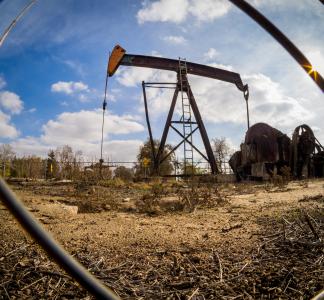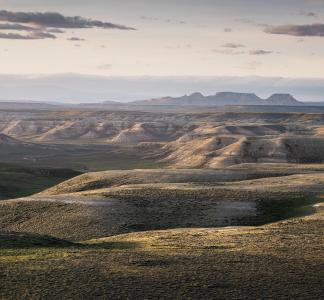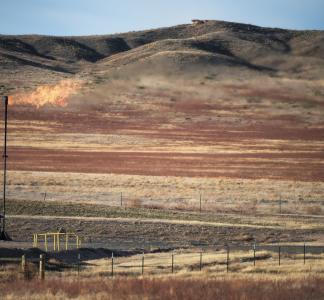What does it take to plug an orphaned well? We asked an expert.
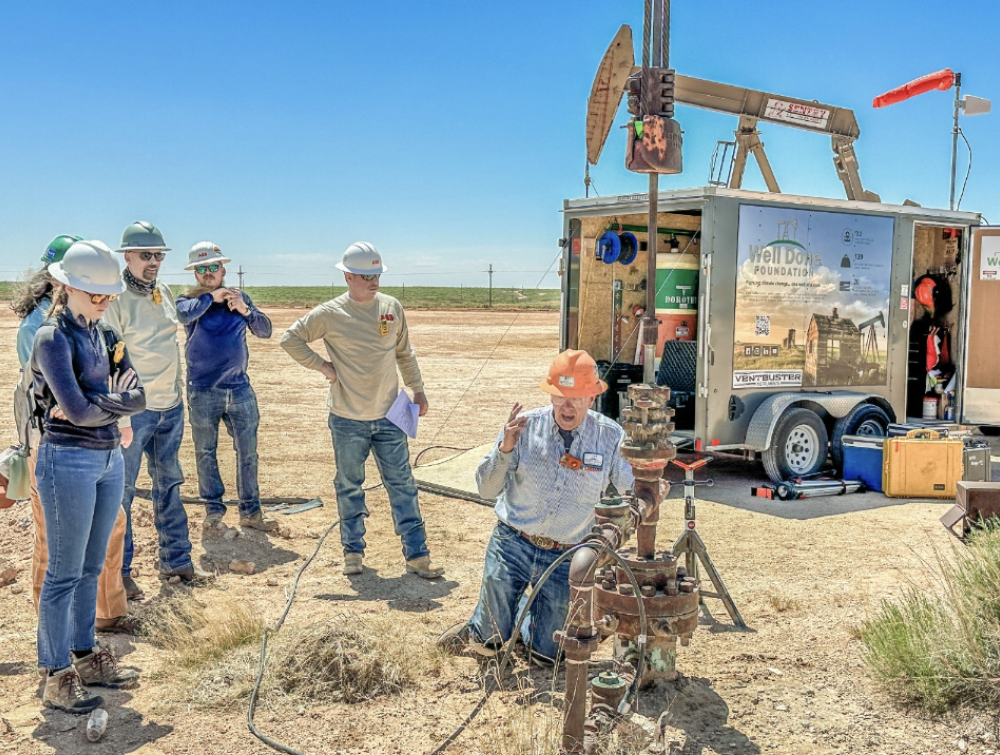
Curtis Shuck and his team observe an oil and gas well
The Well Done Foundation
Millions of orphaned wells wait to be plugged
In the U.S. alone, a total of 120,000 documented orphaned wells are eligible right now for federal funding to finally plug them. And as many as several million additional orphaned wells are undocumented and sitting unplugged, leaking toxins right into schoolyards, backyards, groundwater and across shared recreational areas.
If right now you’re asking yourself “What in the world is an orphaned oil well?”, we’ve got you covered – read our blog post answering just that.
Recent federal efforts are trying to chip away at the abandoned and orphaned well problem. The Infrastructure Investment and Jobs Act made funding available to finance orphaned well cleanup and the Bureau of Land Management recently proposed long-overdue updates to federal bonding rates, the amount oil and gas companies have to pay upfront to fund clean-up costs before they can lease public lands to drill. Funding the cleanup is the first step, finding people to do the cleanup is the next.
We sat down with Curtis Shuck, founder and chairman of the Well Done Foundation – a non-profit organization based in Bozeman, Montana that plugs abandoned and orphaned oil and gas wells. Since 2019, Curtis and his team have plugged 26 wells across the U.S.
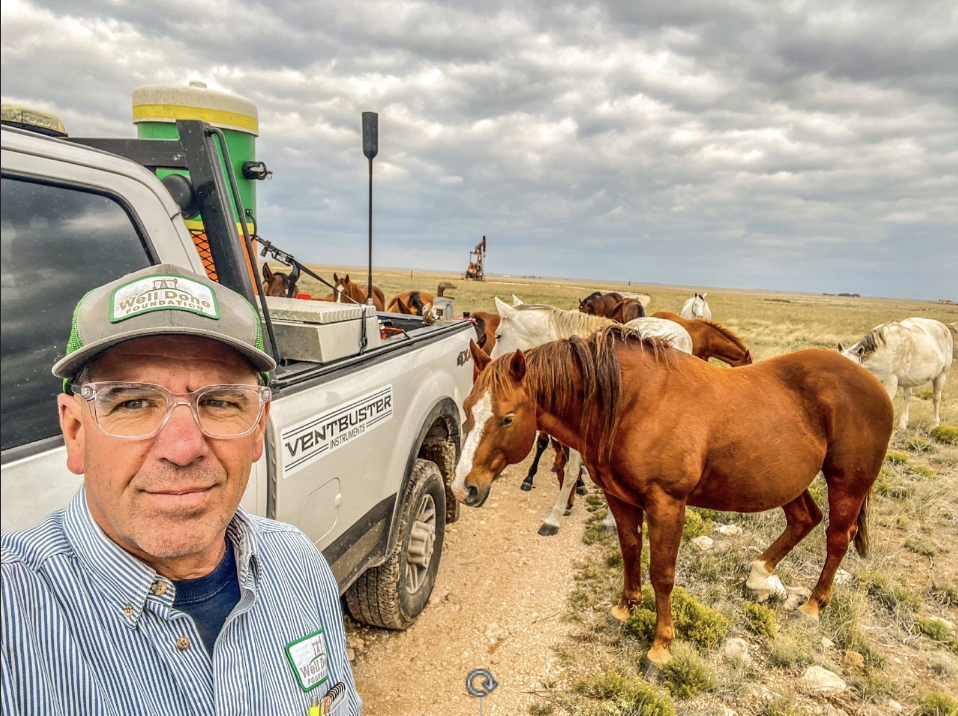
Curtis Shuck onsite at an oil and gas well
Well Done Foundation
How do you plug an orphaned well?
What does this process require? How long does it take? Why dedicate your career to plugging orphaned wells? We asked Shuck. Here’s what he said.
The following interview has been edited for length and clarity.
The Wilderness Society: Why plugging orphaned wells?
Curtis Shuck: In July of 2019, I was with some farmers in Northern Montana working on a logistics project, when I came across my first orphaned well. That was a very moving experience. I just couldn't un-see what I saw that day.
By the time I got back to Bozeman at about 1 am, my wife and I had already secured the domain names for the Well Done Foundation and had registered it with the Secretary of State of Montana. Even though I really had no idea where I was headed, I just knew at that point I needed to do something.
In 2019, orphaned wells were everyone's dirty little secret. Nobody wanted to talk about the orphaned well problem. The regulators didn't want to talk about it. The oil and gas industry didn't want to talk about it. So when we first approached the state and went to adopt our first orphaned well, they were like: “So you want to give money to the state to assume all financial liability for that well?” And it's really been that premise that has carried us through, even to this day.
Every orphaned well project that we do has measurable benefit. It’s literally gas on, gas off. The results are immediate. The benefits to the climate are immediate.
TWS: You previously worked in the oil and gas industry before founding the Well Done Foundation. Did you find that you had transferrable skills from job to job?
CS: I'm an oil and gas guy. So the short answer is yes. Having experience in the industry has been very valuable. Everything from understanding the language to understanding the kind of intricacies of the industry. At the end of the day, we couldn't do our work without the oil and gas industry. We need those people. We need that equipment to support us in these endeavors.
TWS: How big is this orphaned well problem?
CS: Today, 10 percent of the wells in the United States produce 90 percent of the oil. So that means 90 percent of the wells that are out there are either on the downward side of their lifecycle or have transitioned into that marginal phase.
There are 2 to 3 million orphaned wells that are out there today. There are many more wells that are teetering on the edge of the cornice. It can certainly feel overwhelming. But that's where we really have to go back and stay grounded on our ‘one well at a time’ approach. We know that we're making a difference one well at a time.
TWS: Can you walk us through the ‘one well at a time’ approach? How do you identify and plug an orphaned well?
CS: Every well has a personality. Learning a little bit about that history is important. But these wells sort of take on this life of their own. From start to finish, plugging and restoring the surface can be up to a year or even longer than that.
We have a five-step process that we've laid out. We first start by identifying the orphaned well — 90 percent of our well identification comes by referral. We then end up entering into agreements with the landowners that allow us to access that property and develop a scope of work.
At that point we'll start to do some methane testing. The reality is that the gas compositions of these orphan wells extend well beyond just simply methane. There are many other constituents in that gas that are flammable, like harmful ethane, and hexane, which is a known carcinogen. Our largest concern at that point is really about the safety component. For us, safety is paramount and keeping our employees safe [is a priority].
TWS: You mentioned “adopting” a well. What does that entail and why do you have to do it?
CS: The adoption process is very formal. It’s like adopting a puppy from the pound — there's no give backs, right? Essentially, in every case, we become what's classified as the bonded operator. We assume full responsibility for the costs to plug and decommission that well to restore the surface.
The plugging is the part that everybody loves and that's the next phase. The reality is that the process typically takes about a week. If you think of the entire orphaned well timeline of, say 12 months, the actual plug activity is 1/52nd of that entire timeline.
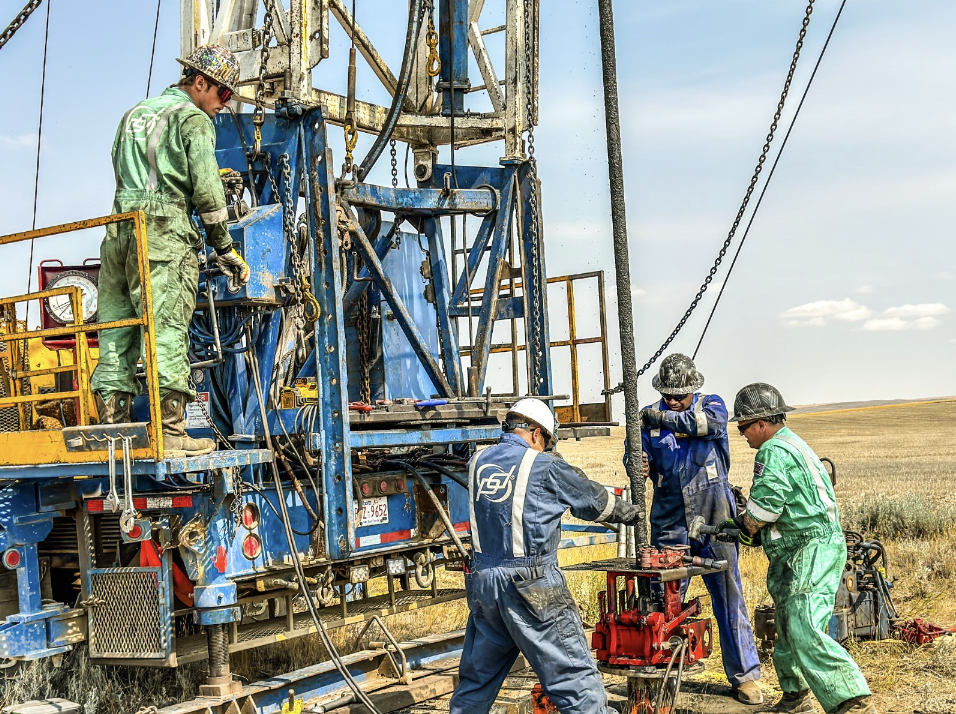
The Well Done Foundation uses equipment to plug an oil and gas well
Well Done Foundation
TWS: What are your relationships like with the folks whose property you plug wells on?
CS: This is all failing or failed infrastructure. Some wells are wide open, other wells still have abandoned rods and tubing in the hole. We've seen cannon balls, fence posts — all kinds of stuff down these well holes.
We get the whole spectrum [of complaints from landowners about orphaned wells]. It can be that this thing is super stinky and is bothering me. It can be that it's moving fluid to the surface, either brine, water or oil. Or [it’s] the potential for fire or explosion. Those are real risks. Every well has got a little bit of a different story, but at the end of the day, when we walk away from the project, it's about leaving it better than the way we found it.
We have a commitment to the landowners that extends beyond any of our [legal] requirements. If we see a problem, we're on the hook to come back and fix it. It feels like the right thing to do, which is why we're doing all of this to begin with.
We've been working with the family or the farmer for almost a year at the point [a well is finally plugged]. Whether it's in an urban setting or in a rural setting, everything from being literally in someone's front yard, to being out in the middle of a wheat field, there's a deep appreciation from the landowner to the Well Done Foundation for the work that we've done.
TWS: Anything you’d like to add that we didn’t ask?
CS: The good news is that every well does make a difference. We can clearly demonstrate what those benefits are. And also for the Well Done Foundation’s mission, it's not just about the Well Done Foundation plugging wells. It’s about the Well Done Foundation educating others and inspiring others to join us in the fight.
The work that you and others are doing requiring increased financial assurances is certainly going to slow down the bleeding and stop more orphaned wells from coming into the system. The work that needs to happen with the [oil and gas] operators is to make sure that they have a financial vehicle for planning the eventual abandonment of the well. This is about each of us taking responsibility and each of us taking action to do a better job today than we did yesterday.
